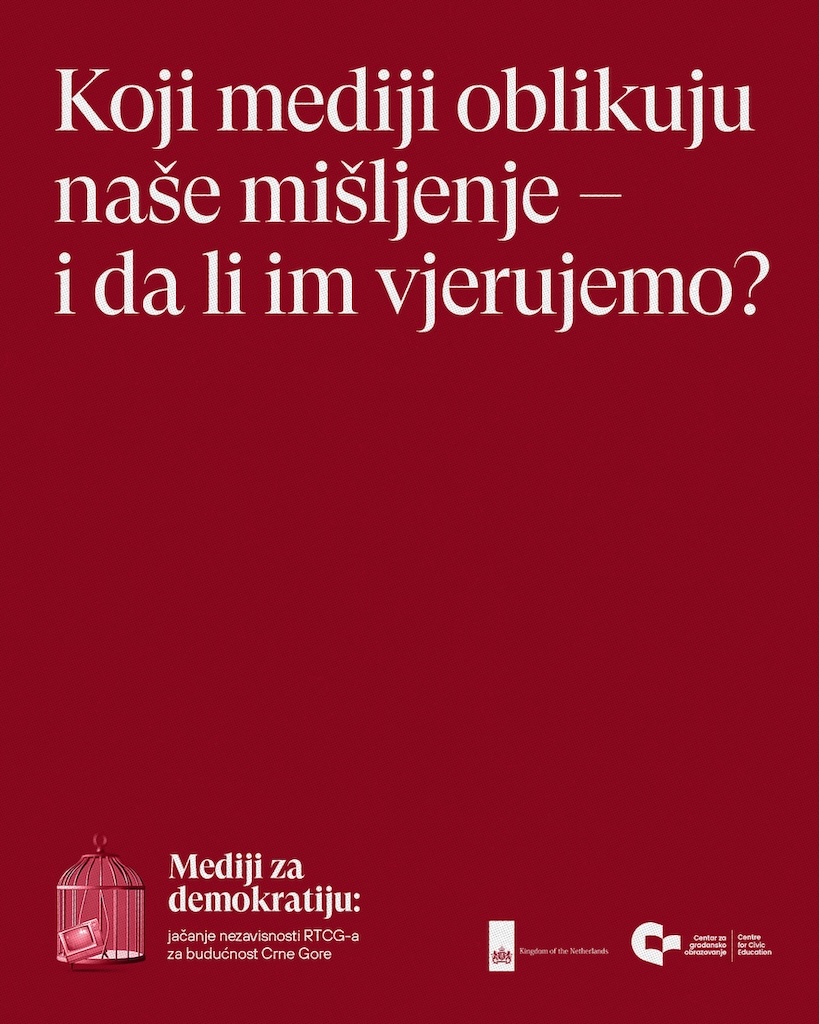Social media is becoming the dominant source of information, while traditional media and television still hold significant influence. Notably, most citizens believe that media literacy should be improved, highlighting an increasing awareness of the importance of critically approaching media content. These are some of the findings from a public opinion survey on citizens’ attitudes toward the media in Montenegro, conducted by the Centre for Civic Education (CCE) as part of the project “Media for Democracy: Strengthening RTCG’s Independence for Montenegro’s Future,” supported by the Ministry of Foreign Affairs of the Kingdom of the Netherlands.
According to the survey results, 68.8% of respondents state that they often or very often follow social media, while 53.2% regularly visit online news portals. This indicates that digital media have become the primary source of information for most Montenegrin citizens, posing challenges to traditional media and their role in society.
However, television remains influential, with 59.5% of respondents frequently or very frequently watching TV programmes. This is further illustrated by the fact that 54.5% of respondents rely on multiple TV channels when an important event occurs. On the other hand, print media have the lowest reach – nearly half of respondents (46.6%) never read newspapers, while radio holds a middle-ground position.
Among those who read daily newspapers (app. 53% of respondents), 40% regularly choose Vijesti, 30.5% read Dan, and 28.5% read Pobjeda, while around 1% have no preferred newspaper.
Regarding television viewership, TV Vijesti leads (around 25%), followed by RTCG (around 21%), and then Nova M and Prva TV (each slightly over 16%), while other channels have lower ratings. Among those who trust television channels, TV Vijesti ranks first (25%), followed by RTCG (24%) and Prva TV (9%). Other TV channels fall below these percentages.
In terms of online news portals, Vijesti is the most frequently visited (26%), followed by CdM (14%) and RTCG (10.7%), with other portals attracting varying percentages of regular visitors.
When it comes to trust, the rankings remain largely the same, with a notable finding that over 15% of daily newspaper readers do not trust them, over 20% distrust all TV channels, and over 21% do not trust any online news portal.
Nearly two-fifths (39.5%) of respondents believe that media outlets in Montenegro are significantly influenced by the political orientation of their owners, while 35.7% think that government authorities hinder investigative journalism. Additionally, 34.9% of respondents feel that the media in Montenegro often pass judgment before the courts do.
On the other hand, 43.9% partially agree that the media protect democracy, while about 42% believe that media outlets thoroughly verify facts before publishing and adhere to ethical standards. However, nearly 40% of respondents do not believe that truth is a priority in the media, 36.5% perceive media as impartial, while 34% believe that the media do not prioritize citizens’ interests.
It is important to highlight that 58.1% of respondents believe that media literacy among Montenegrin citizens should be improved to better understand the information they receive.
Nikola Obradović, Programme Associate

